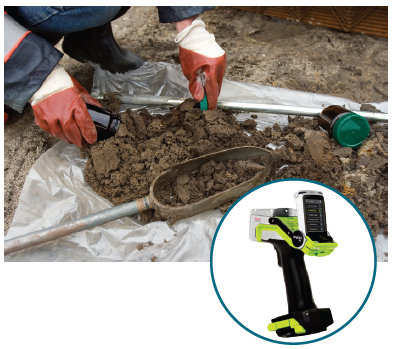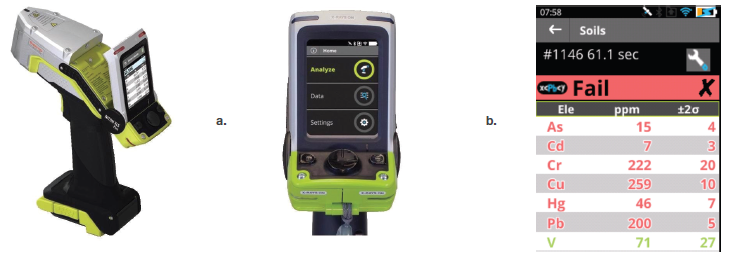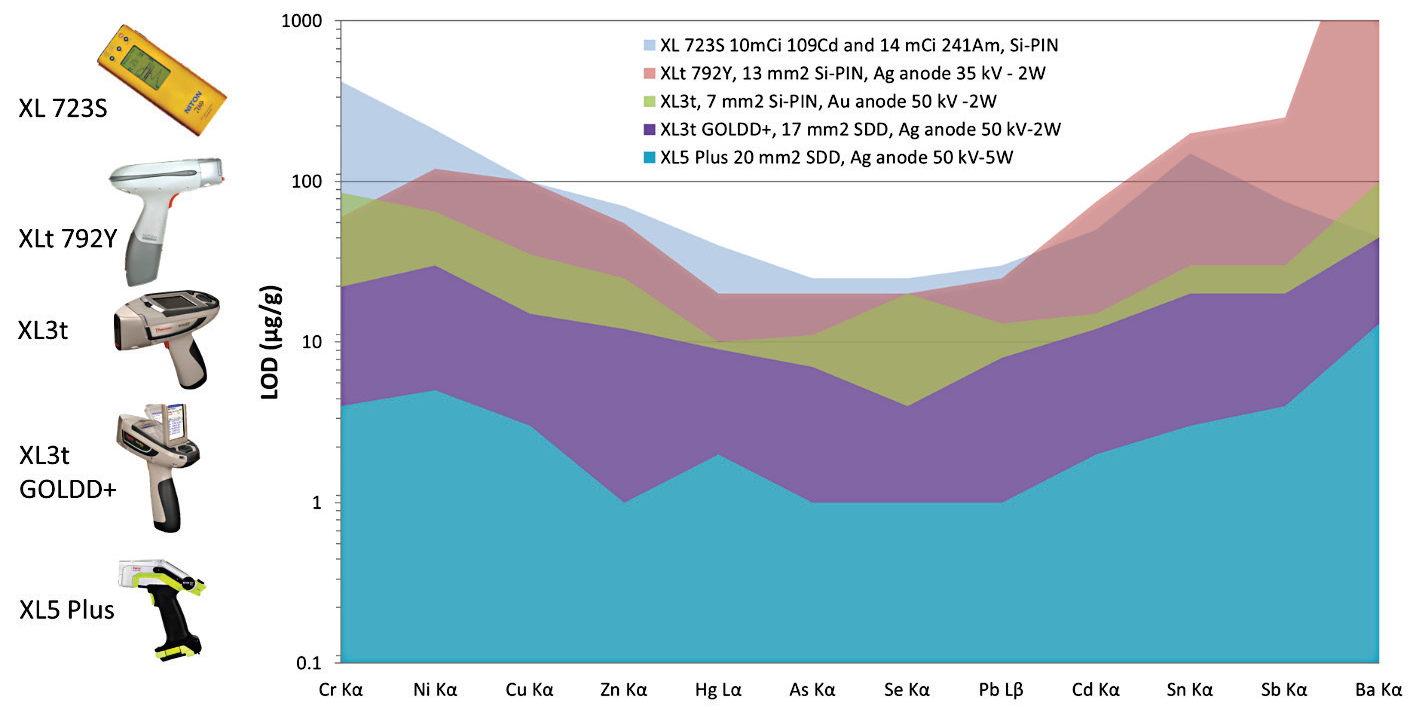Heavy metal contamination of soils has emerged as a significant environmental concern, primarily due to its detrimental impact on food quality, groundwater, micro-organisms, and plant growth.
Human activities, including mining, smelting, traffic, agriculture, domestic operations, as well as industrial sectors like iron, steel, and chemical production, represent the primary sources of heavy metal pollution in the environment.
The global awareness of environmental issues has been increasing, leading to a greater understanding of the harmful effects associated with heavy metals. As a result, public pressure around the world has prompted additional regulations and laws. These measures include:
- Restrictions on the release of heavy metals during industrial or mining operations.1
- Risk assessments and/or monitoring of potentially contaminated areas such as agricultural land, residential, commercial, and industrial sites are required.
These statutes have led to the enforcement of legal limits for heavy metals. Now, sites must be screened to ensure adherence to regulations.
However, thanks to high-density in-situ testing, handheld X-ray fluorescence (XRF) analyzers are perfect for mapping a site’s pollution, determining the extent and boundaries of contamination, and defining required remediation strategies.

The Thermo Scientific™ Niton™ XL5 Plus Handheld XRF Analyzer. Image Credit: Thermo Fisher Scientific – Handheld Elemental & Radiation Detection
Handheld XRF can also be used to pre-screen samples before they are sent for confirmatory laboratory testing.
The US EPA Method 62002,3 and ISO 13196 norm4,5 have established handheld XRF as an acceptable method for soil analysis. Niton handheld XRF analyzers have assisted environmental professionals, universities, industries, and regulators in the screening and quantification of heavy metals in soils and sediments for nearly 30 years.

Figure 1. a) Niton XL5 Plus handheld XRF analyzer b) Display of pass/fail result and elemental analysis of soil sample. Image Credit: Thermo Fisher Scientific – Handheld Elemental & Radiation Detection
Instrumentation and Features
The Niton XL5 Plus handheld XRF analyzer (Figure 1a) revolutionizes soil analysis with its cutting-edge proprietary miniaturized 5W/50kV-X-Ray tube, latest silicon-drift-detector (SDD) technology, and lightweight and compact form factor. These features significantly enhance analytical performance and operational efficiency.
In the Soils mode, the Niton XL5 Plus analyzer can measure elements ranging from sulfur to uranium. It achieves this by employing up to three different combinations of filters and voltages, which greatly improve the signal-to-noise ratios of fluorescence lines across the entire energy spectrum.
To deliver accurate results, the Soils mode utilizes a proprietary Fundamental Parameter (FP) algorithm. This algorithm takes into account the high variability of sample composition and factors in absorption and secondary excitation effects resulting from the matrix.
Real-time results are displayed on the Niton XL5 Plus analyzer’s screen (Figure 1b). Users can optimize the Soils mode with various customizations such as measurement time differences, pass/fail thresholds, element display formats, pseudo-elements, data field sets, and matrix-specific calibration adjustments.
The Niton XL5 Plus analyzer allows users to save these customized parameters under different Soils mode profiles. This feature supports multiple configurations on the same instrument, facilitating instant measurements with appropriate settings.
An integrated GPS enables spatial data visualization, site mapping, and modeling of heavy metal pollution with the Niton XL5 Plus analyzer. External GPS systems can be connected to the analyzer via Bluetooth. Measurement data can also be conveniently transferred to PCs using USB or wireless connectivity options such as Wi-Fi.
Sample Presentation
Users of the instrument have two options for conducting soil analysis: in-situ point-and-shoot mode or intrusive mode.2 In point-and-shoot mode, the user directly aims the Niton XL5 Plus handheld XRF analyzer at the soil surface after clearing away debris, small stones, or vegetation.
This mode is suitable for screening purposes, providing qualitative and semi-quantitative results and facilitating the quick identification of pollution hotspots. A Soil Guard (Figure 2a) is recommended to help keep the analyzer’s window bracket clean for optimal performance.
For enhanced capabilities and improved ergonomics during point-and-shoot measurements, users have the option to operate the instrument upside down using a tripod (Figure 2b). In intrusive mode,2,5 users extract a soil fraction from the site, homogenize it using a mortar or grinder, and perform sieving and drying if necessary.
The resulting powder is then placed in a sample bag or cup and introduced to the analyzer using a mini-test stand (Figure 2c). Intrusive analysis, including basic sample preparation, can be carried out on-site or in a laboratory.
The analysis of sample cups containing homogenized powder tends to be a lengthier process (30 seconds to several minutes). This analysis can detect elements at lower concentrations and yield higher accuracy than point-and-shoot measurements.

Figure 2. Accessories for the Niton XL5 Plus handheld XRF analyzer: a) Soil guard to protect window bracket b) Tripod for in-situ measurements c) Mini test stand. Image Credit: Thermo Fisher Scientific – Handheld Elemental & Radiation Detection
Analytical Performance
Sensitivity
Over the past 25 years, considerable progress has been made regarding sensitivity for heavy metal detection in soils. Figure 3 shows various Niton XRF analyzer limits of detection (LOD) for elements Cr, Cu, Cd, Ni, Zn, Hg, As, Se, Pb, Sn, Sb, and Ba.
Continuous technological development of X-ray sources, detectors, and electronics has enhanced LODs for these elements by one to two orders of magnitude. The Niton XL5 Plus handheld XRF device has achieved an unprecedented level of sensitivity compared to previous generations.
This heightened sensitivity is especially beneficial when it comes to identifying heavy metals present at low concentrations, such as Hg or Cd. Users can now detect these heavy metals at levels below ten parts per million (ppm) within reasonably short measurement times of 20 seconds or less per filter.

Figure 3. Limits of detection (60s per filter) in ppm in pure silica for a selection of heavy metals. Niton XL5 Plus handheld XRF analyzer (2021) vs legacy analyzers: XL3t GOLDD+ (2010), XL3t (2007), XLt 792(2003) and XL 723S (1997). Image Credit: Thermo Fisher Scientific – Handheld Elemental & Radiation Detection
Accuracy
In-situ analysis in point-and-shoot mode will typically lead to qualitative or semi-quantitative results. These results may be enough to assess the presence/absence of heavy metal contamination or to delineate an area with high vs. low concentration.
However, in soil sample analysis, the most significant uncertainty does not originate from the analytical technology or method itself (laboratory-based techniques or handheld XRF), but rather from the sampling process, which may inadequately represent the spatial distribution of contaminants.6
Thus, thorough sample mixing, quartering, particle size reduction, and homogenization are vital preconditions to ensure that accurate quantitative results are obtained.
When samples are homogeneous and representative, the analyzer’s Soils mode delivers exceptionally precise results regarding the heavy metal content.
Figure 4 illustrates the positive correlation between certified and measured values for V, Cr, Cu, Zn, As, Cd, Hg, and Pb obtained in the analysis of 28 commercially available standard reference materials, which cover concentrations varying from a few to several thousand parts per million (ppm).

Figure 4. Correlation plots between certified and measured values using a Niton XL5 Plus handheld XRF analyzer (30s measurement time per filter) for V, Cr, Cu, Zn, As, Cd, Hg and Pb in a set of 28 soil powder standard reference materials. Samples were introduced into cups fitted with a 4 µm polypropylene film. Image Credit: Thermo Fisher Scientific – Handheld Elemental & Radiation Detection

Image Credit: Thermo Fisher Scientific – Handheld Elemental & Radiation Detection
Conclusion
Handheld XRF analysis enables users to enhance their time management and efficiency by conducting real-time assessments and minimizing the number of soil samples sent to a laboratory through pre-screening.
With dramatically improved sensitivity and portability, the Niton XL5 Plus handheld XRF analyzer makes next-level power and advancements available to users today thanks to the following:
- Unprecedented detection of trace levels of heavy metals in a simple, point-and-shoot mode.
- On-site generation of high-quality analytical data with minimal sample preparation.
- Compact and lightweight design while delivering powerful elemental analysis.
Environmental professionals, regulatory agencies, and construction companies can streamline their environmental hazard assessment process, resulting in enhanced efficiency, cost-effectiveness, and a faster return on investments. The benefits include:
- Real-time decision-making through in-situ measurements and site characterization of metal pollutant hotspots according to EPA Method 6200 and ISO 13196.
- Managing uncertainty with improved in-field actions using the Triad approach.7
- Reducing external lab costs via in-situ analysis and sample pre-screening.
- Ensuring contamination below threshold levels and reducing the volume of excavated soil via continual measurement postextraction.
- Screening and clearance of construction sites to limit building delays.
- Instant measurements of all eight RCRA elements and twelve EPA priority pollutants.
- Defensible field decisions reflect the condition of the site thanks to a larger sample density.
- Hazardous waste screening and image capturing using the onboard camera.
- Brownfield remediation monitoring.
References and Further Reading
- The Resource Conservation and Recovery Act (RCRA), Federal Law enacted in 1976
- US EPA Method 6200. Field Portable x-ray fluorescence spectrometry for the determination of elemental concentrations in soils and sediments
- EPA/600/R-97/150 March 1998 Environmental Technology Verification Report Field Portable X-ray Fluorescence Analyzer Niton XL Spectrum Analyzer
- ISO 13196 Soil Quality — Screening soils for selected elements by energy dispersive X-ray fluorescence spectrometry using a handheld or portable instrument
- ISO 13196, Validation Report, Soil Quality — Screening soils for selected elements by energy dispersive X-ray fluorescence spectrometry using a handheld or portable instrument
- M. Ramsey, Contaminated Land: Cost-effective Investigation within Sampling Constraints, Chapter 3 in Portable X-ray Fluorescence Spectrometry Capabilities for in Situ Analysis, Edited by Philip Potts and Margaret West, RSC Publishing 2008
- https://triadcentral.clu-in.org/over/index.cfm

This information has been sourced, reviewed and adapted from materials provided by Thermo Fisher Scientific – Handheld Elemental & Radiation Detection.
For more information on this source, please visit Thermo Fisher Scientific – Handheld Elemental & Radiation Detection.